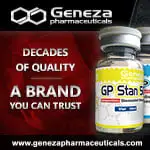Mavafanculo
New member
since I pointed out that the SERM raloxifene has a number of studies documenting efficacy in the reversal of existing gyno, at a higher success rate than Nolva which was also effective for this application, a number of members have asked for specific dosing protocols.
Based on a review of bro-ology across the different boards and at least one study, the effective dose appears to be in the range 60mg daily to 80/100 mg daily for gyno reversal. basically the same as with nolva.
here's some reading:
------
1: J Pediatr. 2004 Jul;145(1):71-6. Related Articles, Links
Comment in:
* J Pediatr. 2005 Apr;146(4):576; author reply 576-7.
* J Pediatr. 2005 Apr;146(4):576; author reply 576-7.
Beneficial effects of raloxifene and tamoxifen in the treatment of pubertal gynecomastia.
Lawrence SE, Faught KA, Vethamuthu J, Lawson ML.
Department of Pediatrics, University of Ottawa, Ontario, Canada.
slawrence@cheo.on.ca
OBJECTIVES: To assess the efficacy of the anti-estrogens tamoxifen and raloxifene in the medical management of persistent pubertal gynecomastia.
STUDY DESIGN: Retrospective chart review of 38 consecutive patients with persistent pubertal gynecomastia who presented to a pediatric endocrinology clinic. Patients received reassurance alone or a 3- to 9-month course of an estrogen receptor modifier (tamoxifen or raloxifene).
RESULTS: Mean (SD) age of treated subjects was 14.6 (1.5) years with gynecomastia duration of 28.3 (16.4) months. Mean reduction in breast nodule diameter was 2.1 cm (95% CI 1.7, 2.7, P <.0001) after treatment with tamoxifen and 2.5 cm (95% CI 1.7, 3.3, P <.0001) with raloxifene. Some improvement was seen in 86% of patients receiving tamoxifen and in 91% receiving raloxifene, but a greater proportion had a significant decrease (>50%) with raloxifene (86%) than tamoxifen (41%). No side effects were seen in any patients.
CONCLUSION: Inhibition of estrogen receptor action in the breast appears to be safe and effective in reducing persistent pubertal gynecomastia, with a better response to raloxifene than to tamoxifen. Further study is required to determine that this is truly a treatment effect.
PMID: 15238910 [PubMed - indexed for MEDLINE]
-----
1) ............We decided to evaluate the effect of raloxifene in a series of patients with gynaecomastia. Twelve patients aged 18-84 years were treated. Breast enlargement was unilateral in 5 cases; its duration ranged from a few weeks (7 cases) to several years (5 cases). Four patients were hypogonadal by clinical criteria, and had low serum testosterone. In two patients there was a possible drug effect (prasterone in one, ranitidine in the other). The size of breast tissue ranged between 1.5 and 6.0 cm. All patients had normal testes by palpation, and normal serum levels of estradiol, LH, FSH, prolactin, and alpha-hCG. Liver function tests and serum creatinine also were normal. The dose of raloxifene was 60 mg every other day in 4 elderly patients (age 70 years or more), and 60 mg daily in the remaining; the medication was given for 2-12 months. Hypogonadal patients received, in addition, i.m. injections of testosterone enanthate, 100 mg twice a month.
Raloxifene was well tolerated; only one young patient reported a slight decrease in sexual potency. No subject complained of hot flushes; there were no episodes of thrombophlebitis during follow-up. The analgesic effect of treatment was fast (2-4 weeks) and sustained among 9 patients with pain and tenderness. The size of the gynaecomastia was evaluated monthly by means of a caliper (all patients), and ultrasonography (7 patients). All patients responded: there was an average reduction in size of 61% (range: 34-100%); in 2 patients gynaecomastia disappeared. Six of 8 eugonadal patients (75%) had a reduction in the size of breast tissue of at least 50% (average, 73%). Among hypogonadal patients (all of them followed with ultrasonography) gynaecomastia disappeared in one, and size reduction in the remaining subjects ranged between 46 and 67% (this is particularly noteworthy, since testosterone replacement not infrequently causes or aggravates gynaecomastia due to local aromatization to oestrogens by mammary tissue). Maximal effect was observed during the first 2 months of treatment.
This open, observational study suggests that raloxifene may be a safe, well tolerated and effective therapeutic alternative for drug-induced or idiopathic gynaecomastia in men of all ages.
http://www.bmj.com/cgi/eletters/327/7410/301#36880
-----
Based on a review of bro-ology across the different boards and at least one study, the effective dose appears to be in the range 60mg daily to 80/100 mg daily for gyno reversal. basically the same as with nolva.
here's some reading:
------
1: J Pediatr. 2004 Jul;145(1):71-6. Related Articles, Links
Comment in:
* J Pediatr. 2005 Apr;146(4):576; author reply 576-7.
* J Pediatr. 2005 Apr;146(4):576; author reply 576-7.
Beneficial effects of raloxifene and tamoxifen in the treatment of pubertal gynecomastia.
Lawrence SE, Faught KA, Vethamuthu J, Lawson ML.
Department of Pediatrics, University of Ottawa, Ontario, Canada.
slawrence@cheo.on.ca
OBJECTIVES: To assess the efficacy of the anti-estrogens tamoxifen and raloxifene in the medical management of persistent pubertal gynecomastia.
STUDY DESIGN: Retrospective chart review of 38 consecutive patients with persistent pubertal gynecomastia who presented to a pediatric endocrinology clinic. Patients received reassurance alone or a 3- to 9-month course of an estrogen receptor modifier (tamoxifen or raloxifene).
RESULTS: Mean (SD) age of treated subjects was 14.6 (1.5) years with gynecomastia duration of 28.3 (16.4) months. Mean reduction in breast nodule diameter was 2.1 cm (95% CI 1.7, 2.7, P <.0001) after treatment with tamoxifen and 2.5 cm (95% CI 1.7, 3.3, P <.0001) with raloxifene. Some improvement was seen in 86% of patients receiving tamoxifen and in 91% receiving raloxifene, but a greater proportion had a significant decrease (>50%) with raloxifene (86%) than tamoxifen (41%). No side effects were seen in any patients.
CONCLUSION: Inhibition of estrogen receptor action in the breast appears to be safe and effective in reducing persistent pubertal gynecomastia, with a better response to raloxifene than to tamoxifen. Further study is required to determine that this is truly a treatment effect.
PMID: 15238910 [PubMed - indexed for MEDLINE]
-----
1) ............We decided to evaluate the effect of raloxifene in a series of patients with gynaecomastia. Twelve patients aged 18-84 years were treated. Breast enlargement was unilateral in 5 cases; its duration ranged from a few weeks (7 cases) to several years (5 cases). Four patients were hypogonadal by clinical criteria, and had low serum testosterone. In two patients there was a possible drug effect (prasterone in one, ranitidine in the other). The size of breast tissue ranged between 1.5 and 6.0 cm. All patients had normal testes by palpation, and normal serum levels of estradiol, LH, FSH, prolactin, and alpha-hCG. Liver function tests and serum creatinine also were normal. The dose of raloxifene was 60 mg every other day in 4 elderly patients (age 70 years or more), and 60 mg daily in the remaining; the medication was given for 2-12 months. Hypogonadal patients received, in addition, i.m. injections of testosterone enanthate, 100 mg twice a month.
Raloxifene was well tolerated; only one young patient reported a slight decrease in sexual potency. No subject complained of hot flushes; there were no episodes of thrombophlebitis during follow-up. The analgesic effect of treatment was fast (2-4 weeks) and sustained among 9 patients with pain and tenderness. The size of the gynaecomastia was evaluated monthly by means of a caliper (all patients), and ultrasonography (7 patients). All patients responded: there was an average reduction in size of 61% (range: 34-100%); in 2 patients gynaecomastia disappeared. Six of 8 eugonadal patients (75%) had a reduction in the size of breast tissue of at least 50% (average, 73%). Among hypogonadal patients (all of them followed with ultrasonography) gynaecomastia disappeared in one, and size reduction in the remaining subjects ranged between 46 and 67% (this is particularly noteworthy, since testosterone replacement not infrequently causes or aggravates gynaecomastia due to local aromatization to oestrogens by mammary tissue). Maximal effect was observed during the first 2 months of treatment.
This open, observational study suggests that raloxifene may be a safe, well tolerated and effective therapeutic alternative for drug-induced or idiopathic gynaecomastia in men of all ages.
http://www.bmj.com/cgi/eletters/327/7410/301#36880
-----


 Please Scroll Down to See Forums Below
Please Scroll Down to See Forums Below 












